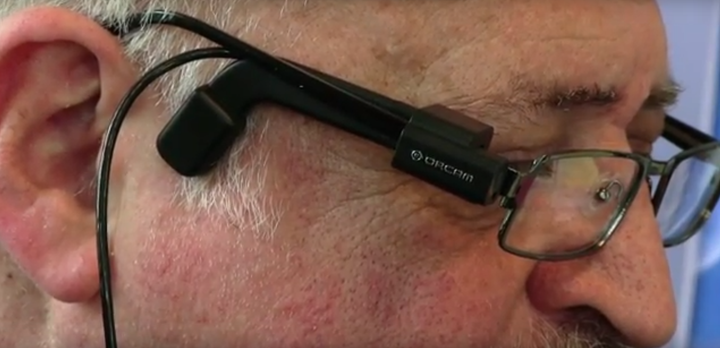Glasses fitted with a specialised miniature camera could help people read who are legally registered as blind, a trial has found.
The camera, which uses optical character-recognition technology, was mounted onto the eyeglasses of people who are considered legally blind and was found to "dramatically improve" their ability to read an email, newspaper article, menu or page in a book.
The device, called OrCam, was trialled by researchers at UC Davis Health System.
It recognises text and reads it to the user using an earpiece that conducts sound and can also be programmed to recognise faces and commercial products.

The pilot study included 12 participants with low vision, six men and six women, all of whom were patients at the UC Davis Eye Center at UC Davis Health System in Sacramento, Calif.
With an average age of 62, the participants experienced vision loss from a wide array of disorders, including age-related macular degeneration and end-stage glaucoma. All were legally blind.
In order to establish their baseline vision, the researchers assessed the participants’ visual functioning using a 10-item test, with patients only using their eye glasses and no low-vision aids for the assessment.
Initially, none of the participants were able to perform five of the 10 tasks: reading a message on an electronic device such as a smartphone or tablet, a newspaper article, menu, letter or page from a book.
A total of 11 of the participants could recognise paper money denominations, eight could locate a room in a hallway using wall-mounted signs, and seven could recognise products and distinguish between similarly shaped and sized cereal boxes.
The researchers then trained the participants to use the portable artificial vision device, which operates either by pointing at an item, tapping on it, or pressing a trigger button. A wire attaches the device to a small pack containing the device’s battery and computer. It can be carried, fit into a pocket or attached to a belt.
After using the device for one week, all of the participants were able to perform nine of the 10 items on the test, with only one individual reporting a technical difficulty.
The participants reported finding the device simple and easy to use, and said they would consider using it in their daily lives. The authors performed a separate sub-analysis of seven patients who were using other low-vision aids and found that their performance on the test was better when using the device, as well.
According to the researchers, the device offers new hope for the large and growing number of individuals with age-related macular degeneration or advanced-stage glaucoma,
Study co-author Mark J. Mannis commented: "Age-related macular degeneration is one of the most common causes of blindness in the elderly and it has no cure in its advanced stages.
"This device offers hope to patients who are beyond medical or surgical therapy for the condition.”
“It is easily used and could potentially bring greater independence, particularly for older patients who are struggling with vision loss."
The research is published in full online in the journal JAMA Ophthalmology.
